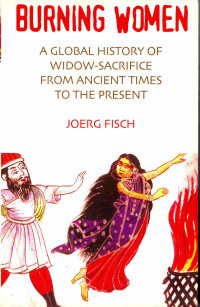
Text
Burning Women A Global History of Widow Sacrifice from Ancient Times to The Present
The practice of widow -burning combines strong spiritual beliefs in the hereafter with the more secular power strunnles of this world, both between the sexes and social groups. "Following into death" is an ancient and widespread custom which entails one or more people - voluntarily or involuntarily - following a dead man or woman into death. The event is ritualized as a public act. The decisive feature is not the manner of dying but the intent, which is to accompany a dead person into the hereafter. Burning Women explores how this custom - of which the Indian Hindu custom of sati, or widow burning, is the best known example - has existed in various forms in most parts of the world. The practice of widow-burning combines strong spiritual beliefs in the hereafter with the more secular power struggles of this world, both between the sexes and social groups. Widow burning in India has long been passionately debated, but its practice in other parts of the world has been neglected. Burning Women is the first history of the anthropological, religious, social and political contexts of widow-burning across the world.
Availability
| KP II.000243 | KP.II FIS b | My Library | Available |
Detail Information
- Series Title
-
-
- Call Number
-
KP II FIS b
- Publisher
- India : Seagull Books., 2006
- Collation
-
x, 610p. ; 22cm.
- Language
-
English
- ISBN/ISSN
-
1 9054 2 203 2
- Classification
-
KP II
- Content Type
-
-
- Media Type
-
-
- Carrier Type
-
-
- Edition
-
2006
- Subject(s)
- Specific Detail Info
-
-
- Statement of Responsibility
-
-
Other version/related
No other version available
File Attachment
Comments
You must be logged in to post a comment
 Computer Science, Information & General Works
Computer Science, Information & General Works  Philosophy & Psychology
Philosophy & Psychology  Religion
Religion  Social Sciences
Social Sciences  Language
Language  Pure Science
Pure Science  Applied Sciences
Applied Sciences  Art & Recreation
Art & Recreation  Literature
Literature  History & Geography
History & Geography